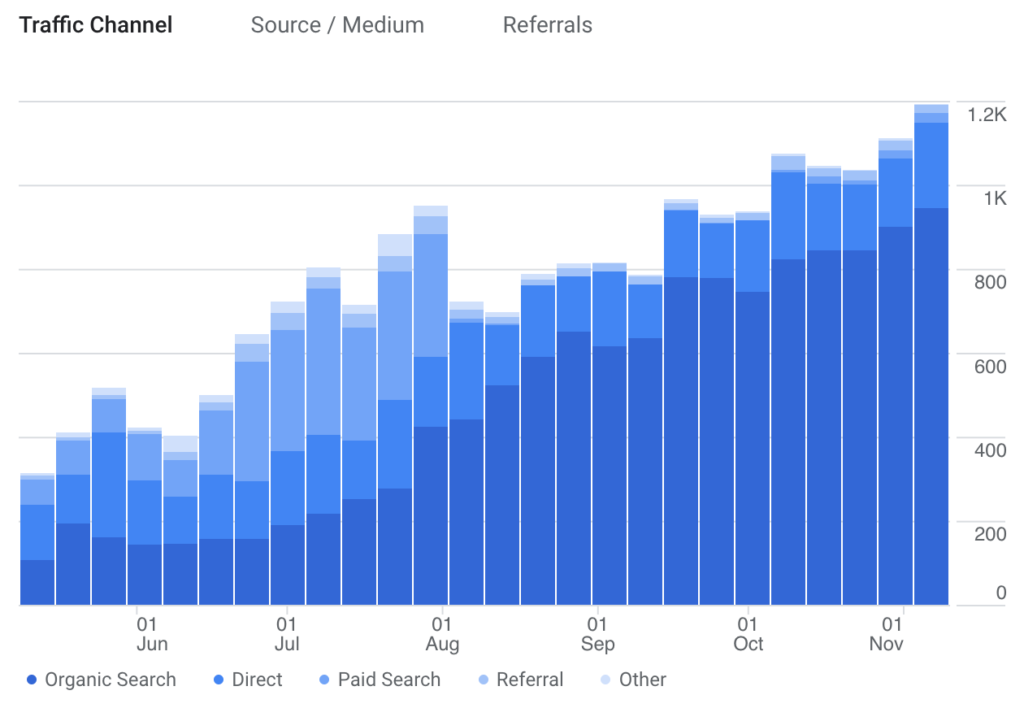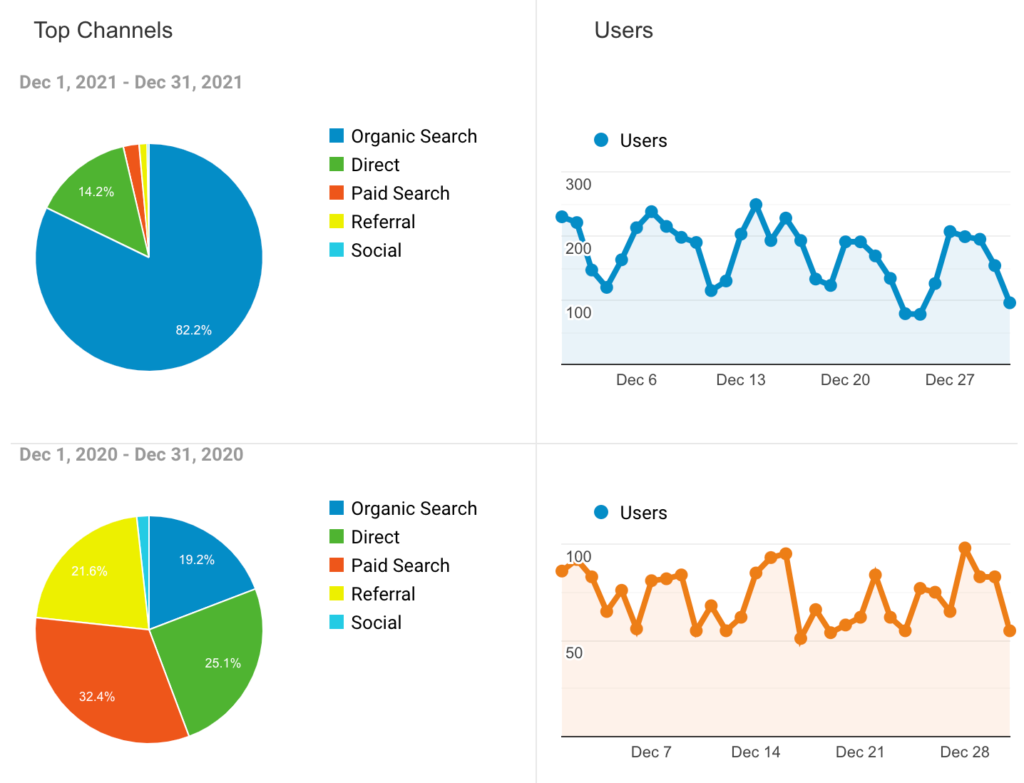How about a nearly 10-fold increase in organic visitors in just one year?
This client success story is one of the best examples of a law firm switching its entire marketing strategy from pay-per-click (PPC) advertising to SEO content marketing, with stratospheric results that continue to pay dividends over 2 years after we started our campaign.

We’ve gone over why SEO content marketing is over 60% more cost-effective for law firms compared to PPC ads. One of the biggest reasons is that PPC advertising stops working for you as soon as you stop paying for it, while SEO content marketing keeps building on itself for exponential growth over time. Here you can see the results in action, with data to back it up!
First, let’s set the stage. Put yourselves in the shoes of a growing law firm. You want high-quality, warm inbound leads that are ready to convert into new clients. They’ve got a legal problem and they should hire you for help because of the value you’ve got to offer.
Click here for answers to the most frequently asked questions about legal content and SEO. Interested in an SEO content strategy like this for your law firm? Let’s chat!
The Switch: From PPC Ads to SEO Content
You can see in the charts below comparing the same time period one year apart that PPC advertising was a big part of this law firm’s 2020 marketing strategy. In 2021, my client turned their strategy entirely to content marketing. Together we rewrote and expanded each of their family law practice area pages from 500 words of basic information to 1500 words of jam-packed value for their clients. We also published a 1000-word blog post per week.

In 2021, 82.2% of this law firm’s visitors – a total of 4,044 people – were organic visitors from search engines. Meanwhile, for all the money this law firm sank into paid advertising the year before, they got a total of just 686 visitors who clicked on their ads. Unfortunately, this Google Analytics profile did not have goal conversions set up for 2020. But the month of December 2021 saw 106 goal conversions of visitors who submitted a contact form request.
Organic visitors are the most valuable type of visitor that you can get to your website because they’re highly motivated. They’re actively searching the internet for legal help. These are warm leads who are willing to hire you as their attorney if you can show them your value and convince them that you can solve their legal issues.
How can you tell already that this content marketing campaign was a success? You can see the difference in the Y-axis on the graphs – the 2021 axis measures 3 times higher than 2020. But that’s not the only measure of success. Let’s go a little deeper into this data, shall we?
A Better Marketing Strategy for Better Leads
To succeed at SEO marketing, you must understand where organic visitors are coming from.

An organic visitor is someone who’s motivated enough to search for answers to their problems online. I always tell clients that when I write SEO content, I write with 3 different people in mind: the skimmer (looking for fast information), the deep diver (looking for more information), and Google (a robot who’s trying to figure out which information humans find most useful).
For the skimmers, I use descriptive headers, bulleted lists, and short paragraphs that are easy to read. For the deep divers, I make sure to allocate enough words to get into their concerns in a way that other websites don’t. (This is why I recommend that law firms make their practice area pages and blog posts at least 1000 words long.) For Google, I include all the right keywords. But Google is looking for more than just keywords on a page.
As search engine algorithms have gotten more and more complex, they’ve switched from focusing on static measurements like keywords to more dynamic measurements that actually reflect how much people are engaging with a website’s content.
- How much time do people spend on this page once they visit?
- Do people visit any additional pages on this website while they’re visiting?
- Do visitors engage with any part of the website, like a contact form?
So many marketing firms focus on the technical aspects of search engine algorithms – because those are the easiest to calculate and quantify. But you must always remember that search engines are trying to figure out what humans like best. No matter what the algorithm does, as long as you create content that appeals to the readers, you’ll rank well on search engines.

Average session duration is an extremely important metric for this reason, along with your goal conversions such as contact form submissions or inbound phone calls. The fact that my client’s visitors started spending more time on their website was critical to helping their SEO. It also proves that the content we created was catered properly to my client’s target market.
The Enduring Power of SEO for Law Firms
My client has continued to post an average of one blog post per week since they shifted to SEO content. And the long-term effects of this powerful form of marketing continue to pay off.

My client went from a high of 140 clicks and 8,000 impressions per day at the end of 2021 to 344 clicks and 13,000 impressions per day in March 2023. It’s been nearly 2 years since implementing my client’s SEO content strategy and their data continues to show an upward trend.
Think of every search engine-optimized page on your website as an asset. If your asset is of high quality, that asset’s value will only grow over time. How? As people find your content helpful, Google will notice more people engaging with your content, your content’s search engine ranking will improve, and even more people will see your content as a result. Rinse and repeat. In this way, your SEO content perpetuates a cycle of positive reinforcement.
If you couldn’t tell from reading this article, I love seeing data like this from my clients. You can see more of my client case studies here and here. If you’ve been thinking about what you can achieve with a strong SEO strategy, schedule your free consultation with me now!
